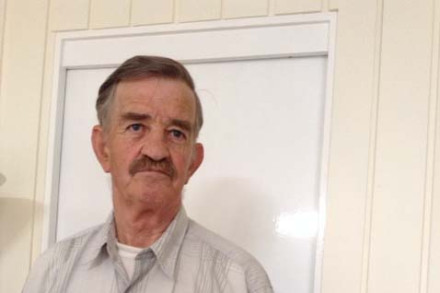Interviewer: Siobhán McHugh for National Library of Australia
Tomás de Bháldraithe was accustomed to the sounds of the Irish language before his official appearance into the world. His Dublin based family, in order to immerse themselves in an Irish speaking environment, used to holiday in the Gaeltacht of Connemara for three months every year. As Tomás recalls, ‘I think it was there in my mother’s womb before I was born, must have been’. His father, one of Ireland’s leading Gaelic scholars, was appointed Professor of Irish in University College Dublin in 1960 and produced what is still one of the standard works in the language, de Bháldraithe’s ‘English Irish Dictionary’. Indeed love of other languages, and the learning of them, has always been part of Tomás’ life. In 1972, whilst working in Norway, he did a simultaneous translation from Irish into Norwegian as President Patrick Hillery read Ireland’s acceptance speech when the country joined the European Economic Community.
From his time in Norway Tomás developed a commitment to the idea of community renewal, especially in relation to isolated communities. Returning to Ireland in the mid-1960s, he attended UCD and after graduation went to work as a schoolteacher in Connemara. It was a time, he feels, when Ireland was emerging from the conservative economic, cultural and social constraints of post-independence governments too easily influenced by the authority of the Catholic church. Those decades had produced a situation which saw young Irish men and women take to the emigrant boat in their thousands:
… it really upsets me … the generations that had to suffer this, the generations that were shipped abroad like cattle on a mail boat by a non-caring and a non-progressive government and a state that were kept in a kind of limbo situation so long by the church.
In Connemara Tomás became a school principal, helped form and run a local Co-Op and participated in a movement to elect an independent to Galway County Council. This was an isolated, Irish-speaking region of self-reliant people who felt themselves more connected, through emigration and returned emigrants, to Boston and New York:
… they are people of their environment and they are very independent … not a nationalistic thing, it’s not a kind of being more Irish than anything else, they just are proud of their heritage and they’ll hang on to it as best they can until modern youth gives it away, this generation will give it away.
A mid career break brought Tomás de Bháldraithe to Sydney and teaching experiences in New South Wales high schools. Here he encountered the remarkable resilience of the human spirit in teenagers with lives torn apart by war. In particular he recalls one diligent student who wanted to succeed but lived alone in a shed behind a block of units:
… to come across such humanity and such dedication and all his family had been wiped out … I think he was from Cambodia.
Tomás also made contact with other Irish immigrants by visiting the Gaelic Club and by going to music sessions listening to singers and musicians like the late John Dengate, a brilliant interpreter of the Irish-Australian story.
A mid-career break, however, turned into marriage and eventually into permanent settlement. For many years Tomás has maintained his connection with the Irish language by teaching Irish classes at the INA and also assisted with the staging of performances of modern Irish musical and theatrical productions. Tomás’ support has always been here for key Irish/Australian events such as the INA’s Easter Sunday commemorations at the 1798 Memorial in Waverly Cemetery and the gathering at the Australian Famine Memorial at the Hyde Park Barracks. He has movingly described one of the elements of the Great Famine Memorial in these words:
… it’s just the table there with a few books left, somebody’s just gone, left the door closed, and that’s all, they’re all gone.
In some ways Tomás feels that he came to the relocation of permanent emigration a bit late in life, something that has made adjustment to the realities of some aspects of modern Australian culture difficult. Nonetheless, the Sydney Irish community is lucky to have among them a truly modern Irishman, a linguist steeped in the beauty and dignity of Ireland as expressed through its native language and historical experience and someone who fully appreciates the complexity and reality of an Ireland made up of different cultural attachments and ways of looking at the world. Tomás welcomes that diversity and dismisses any too narrow definition of what it is to be Irish:
… this kind of a fundamental basis of being Irish, you have to be a Catholic, you have to love the GAA, you have to love the language, no, I respect people from all backgrounds, they can be Irish whether they speak Chinese, Italian or Greek so long as they have an attachment to the country.

